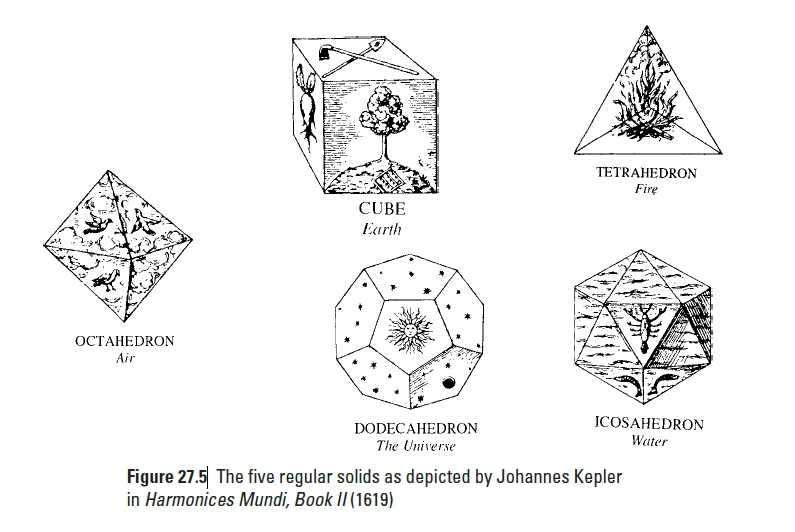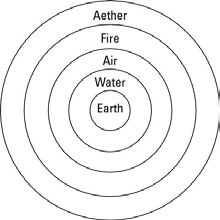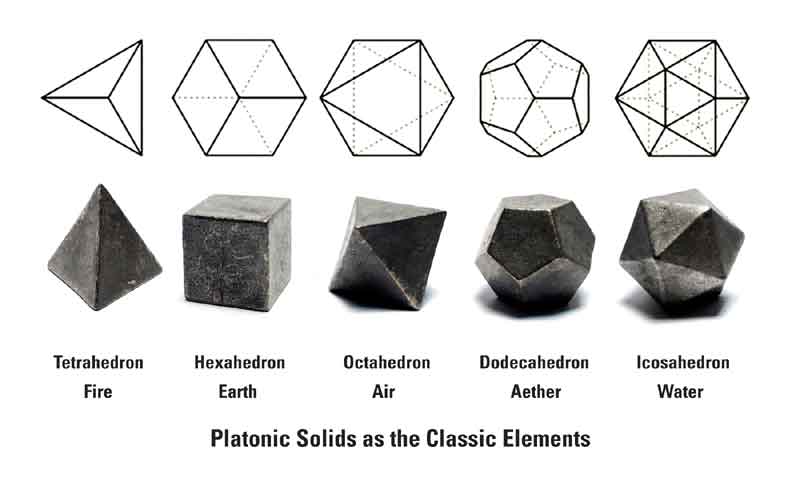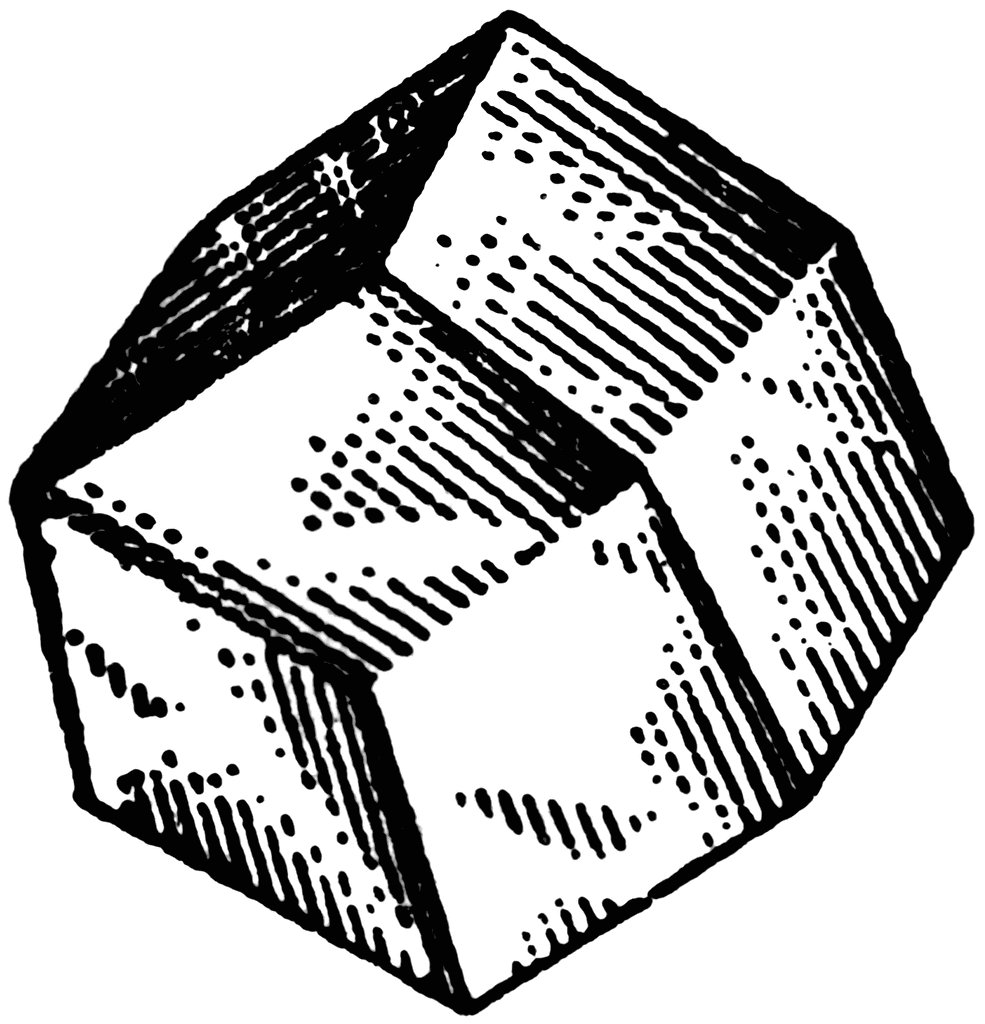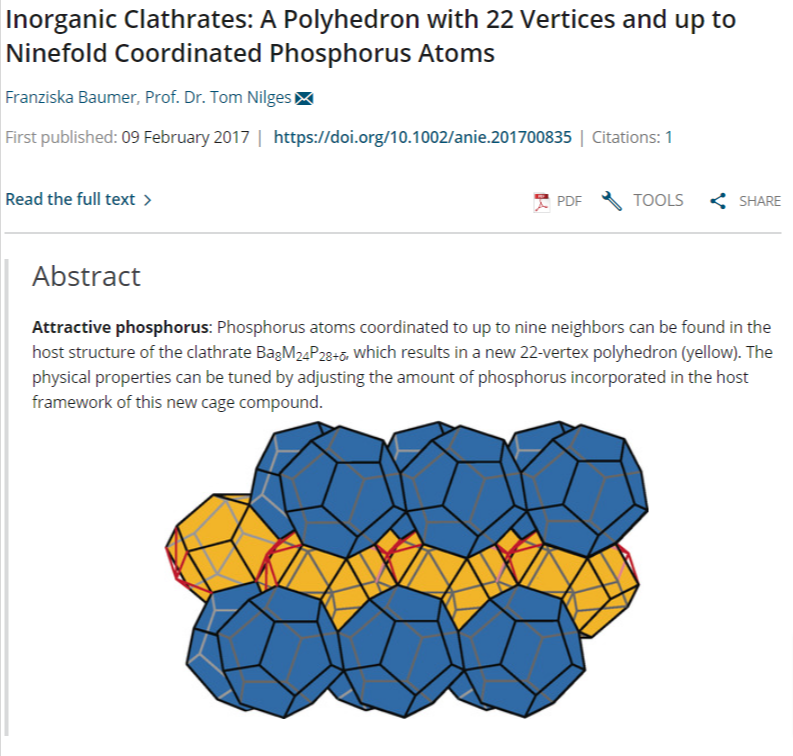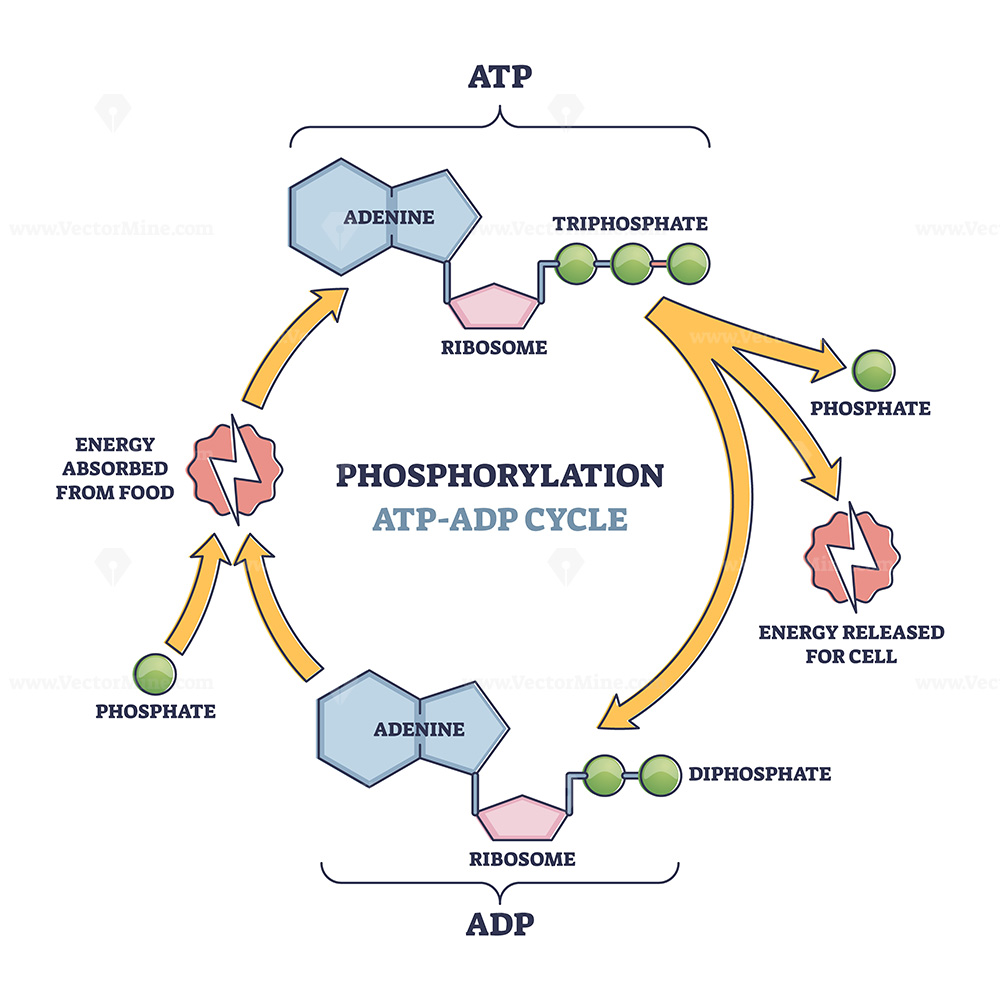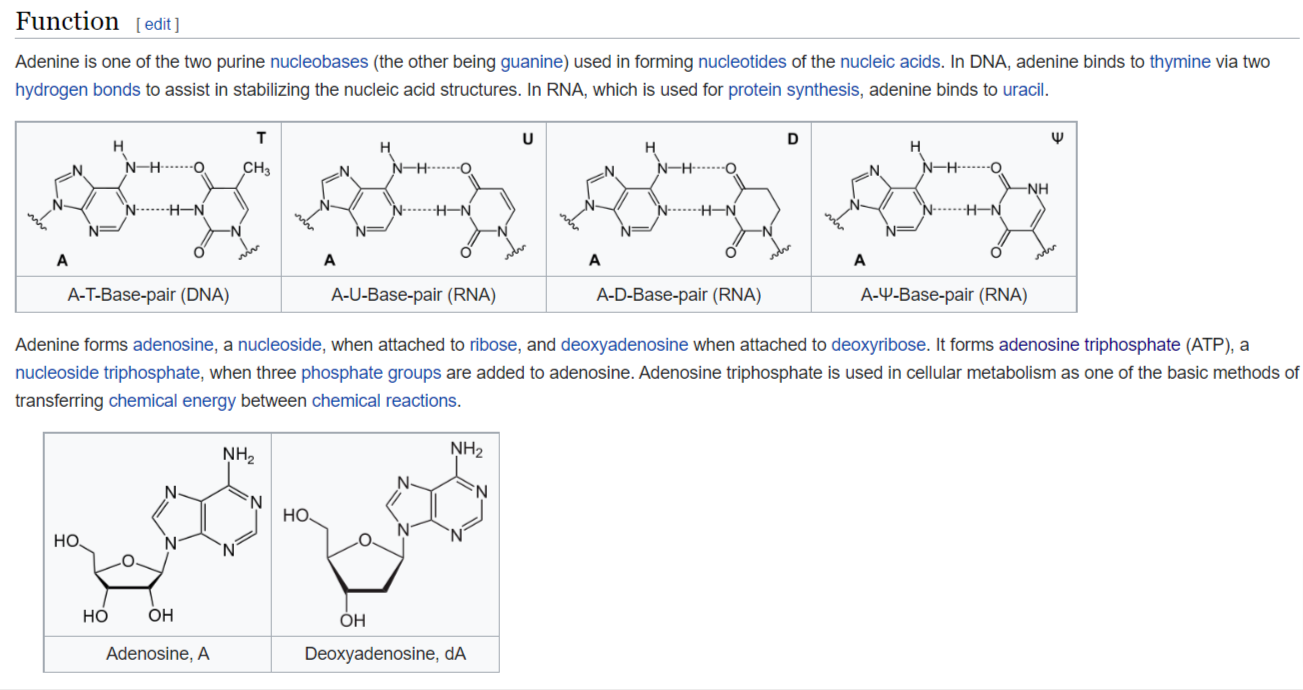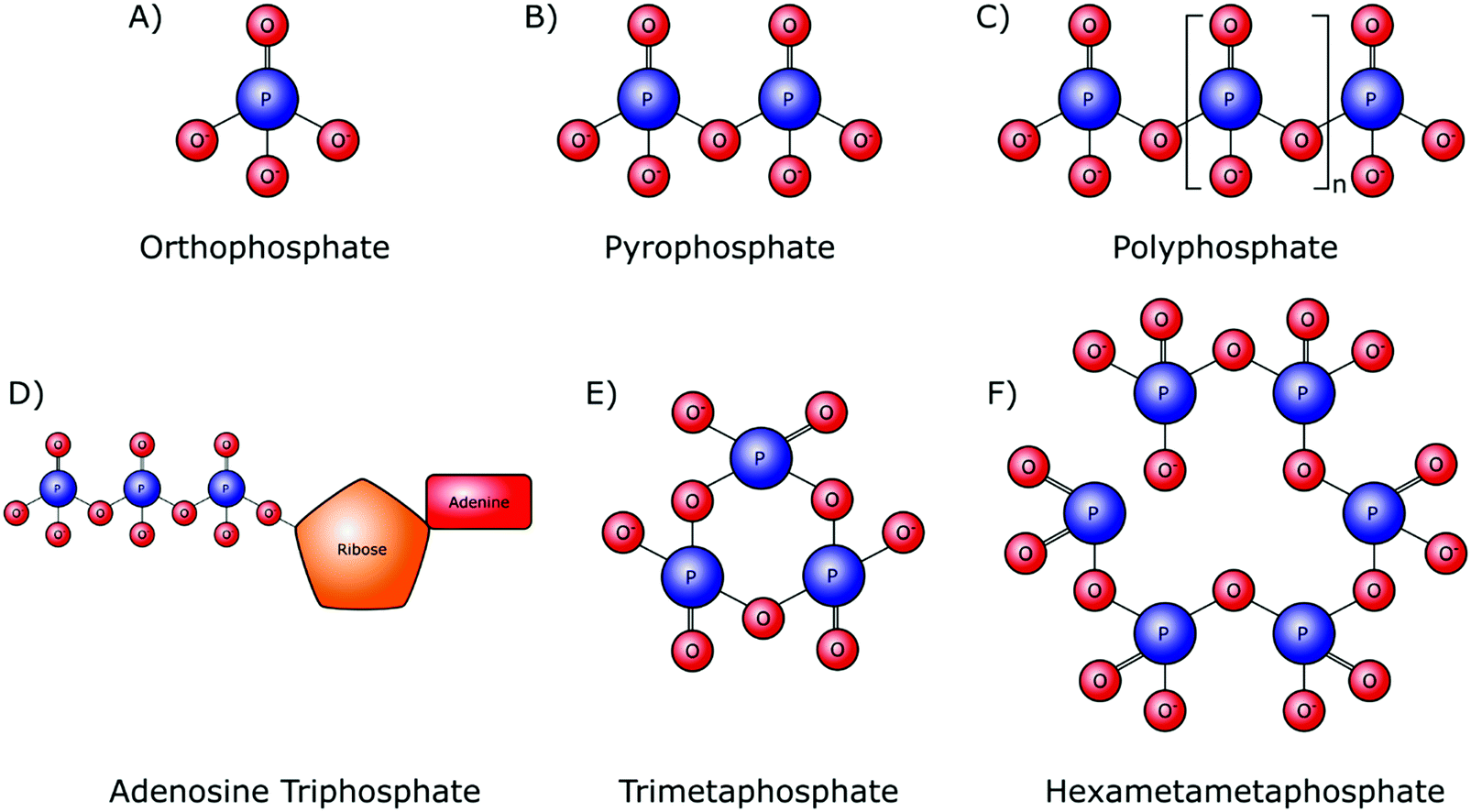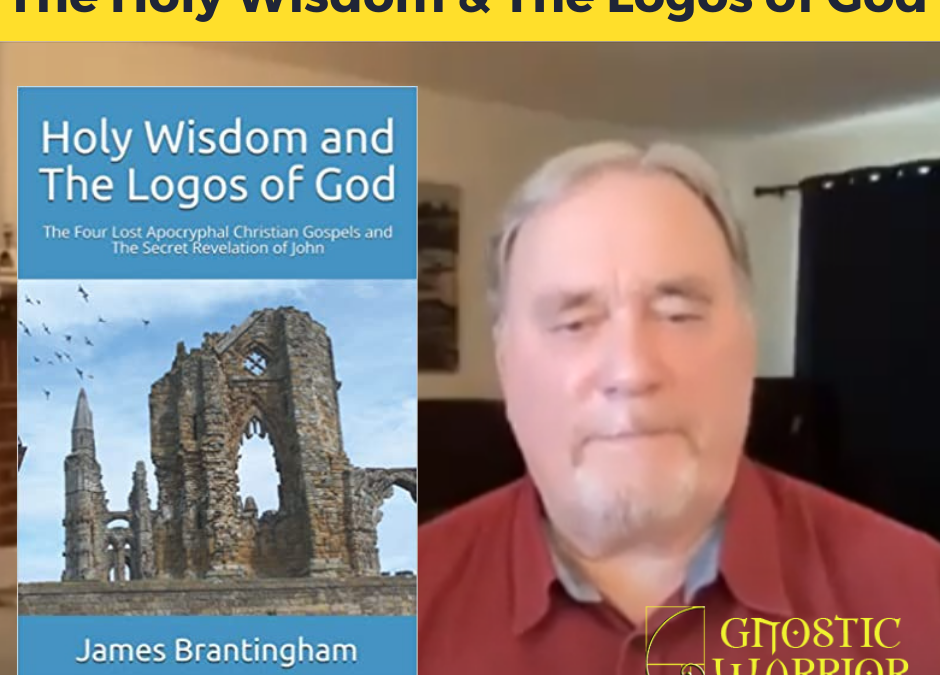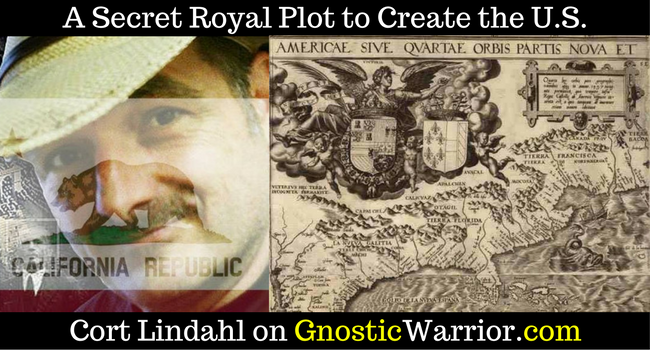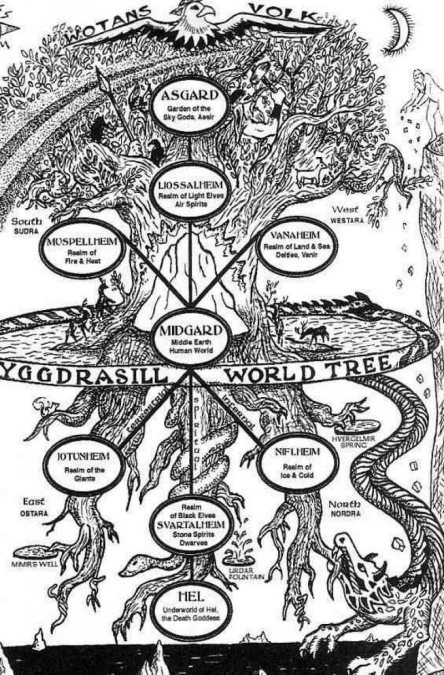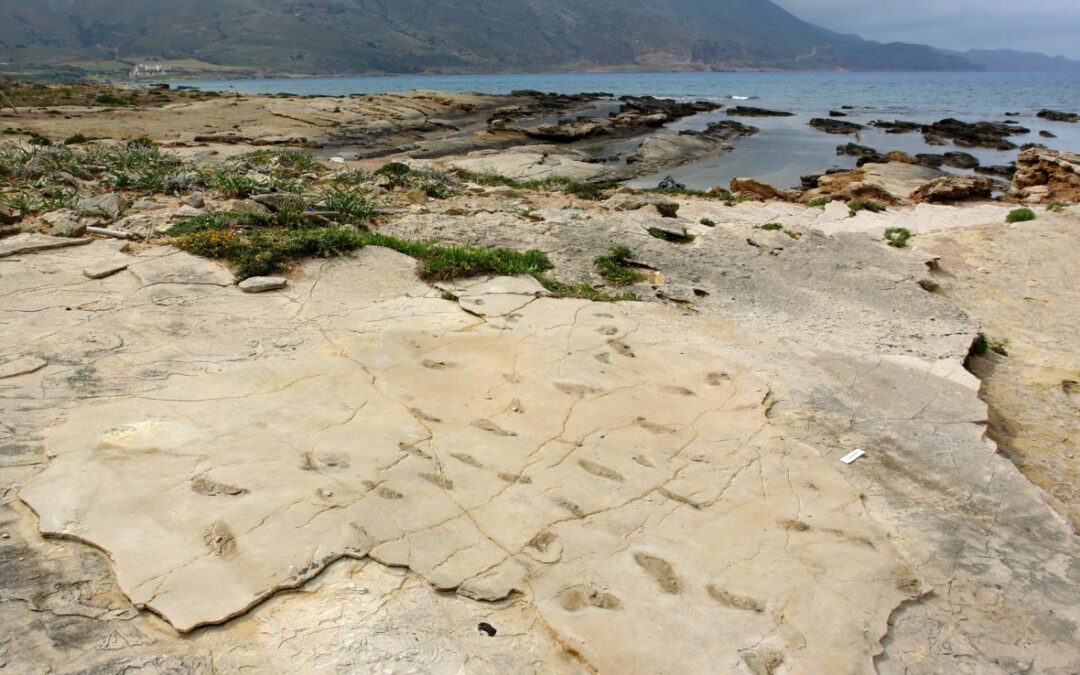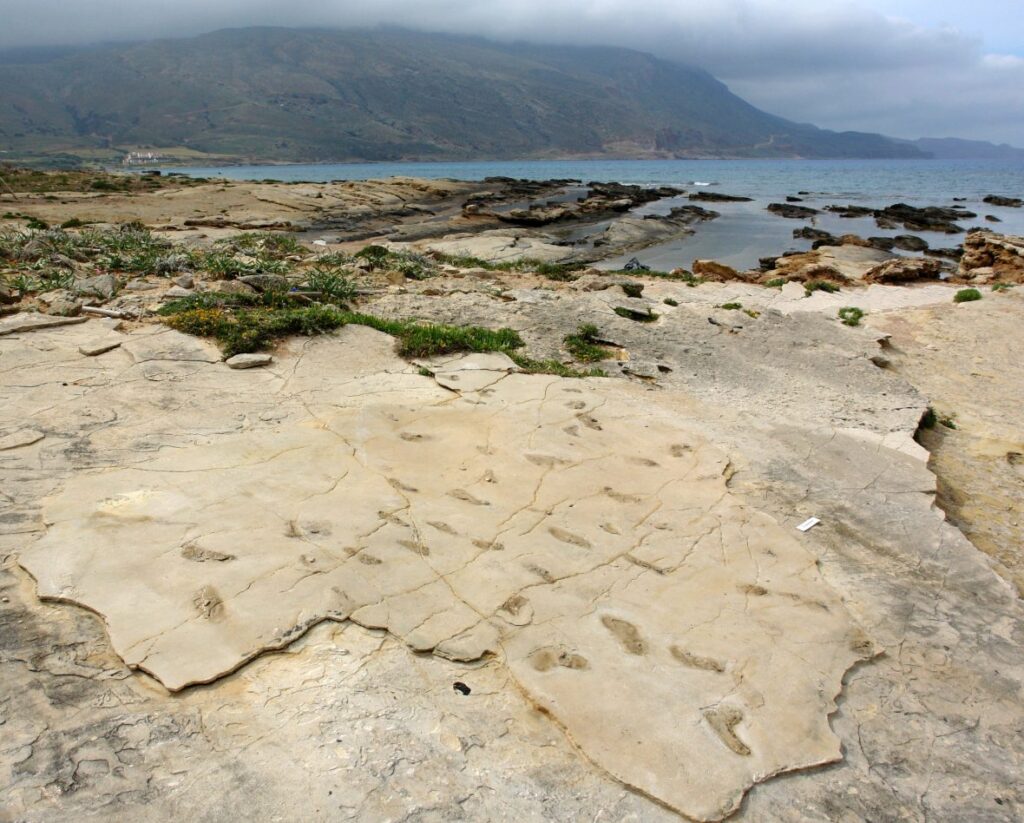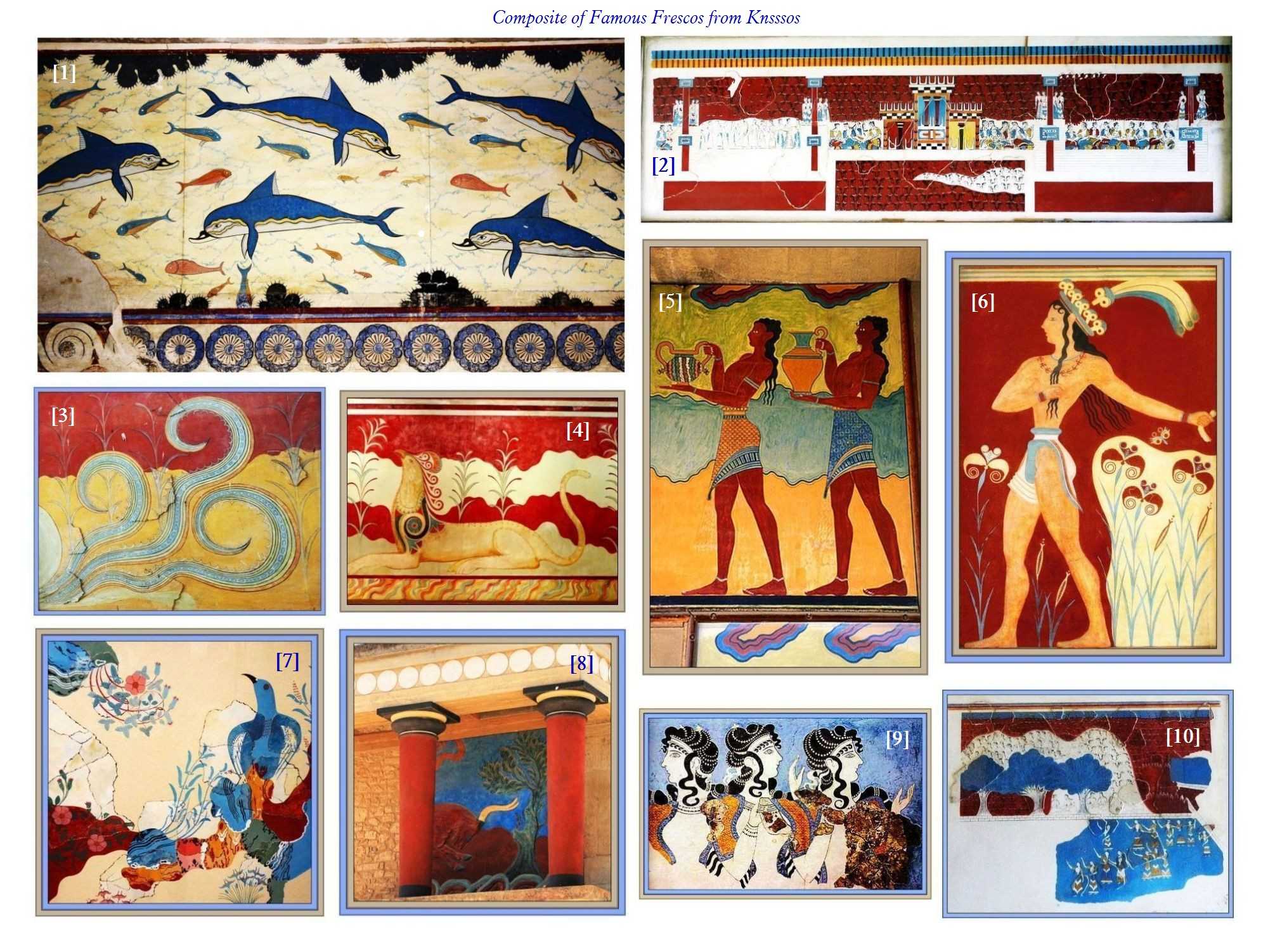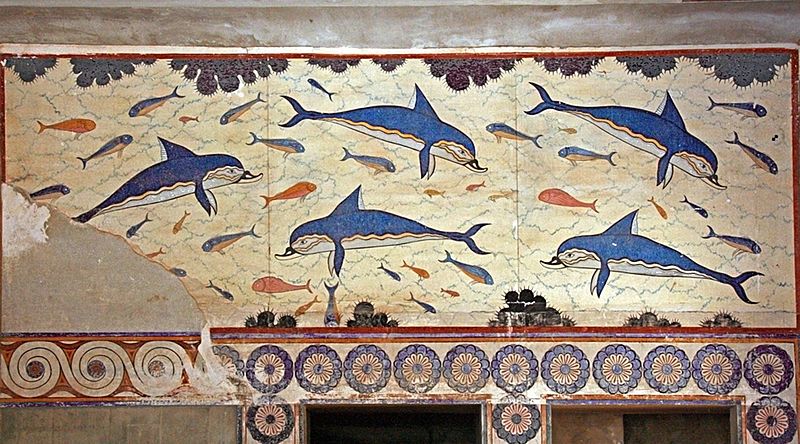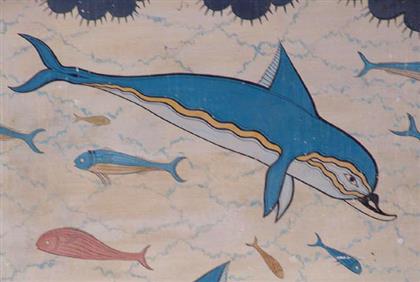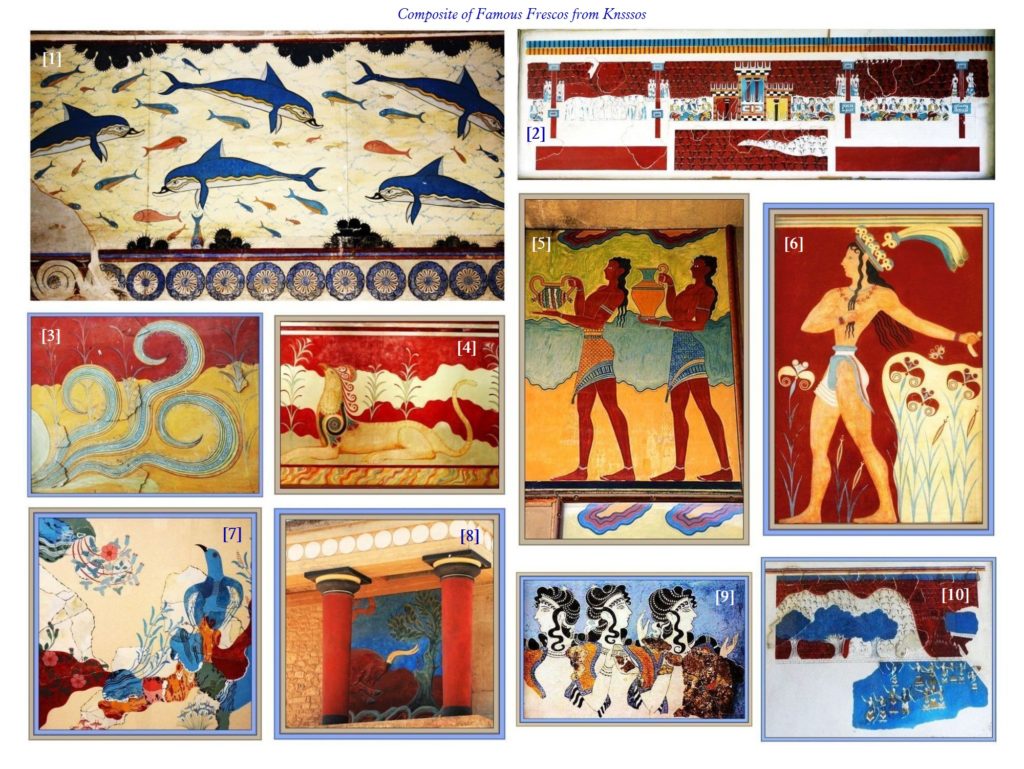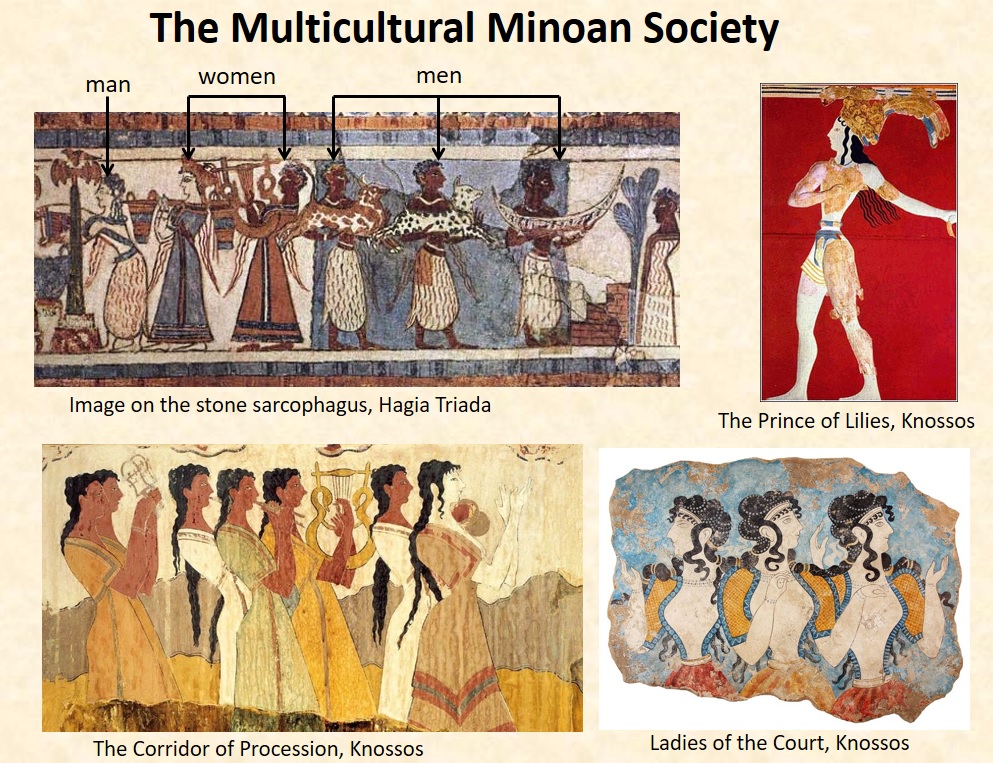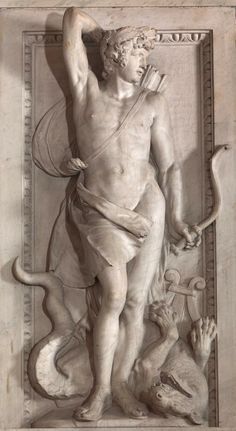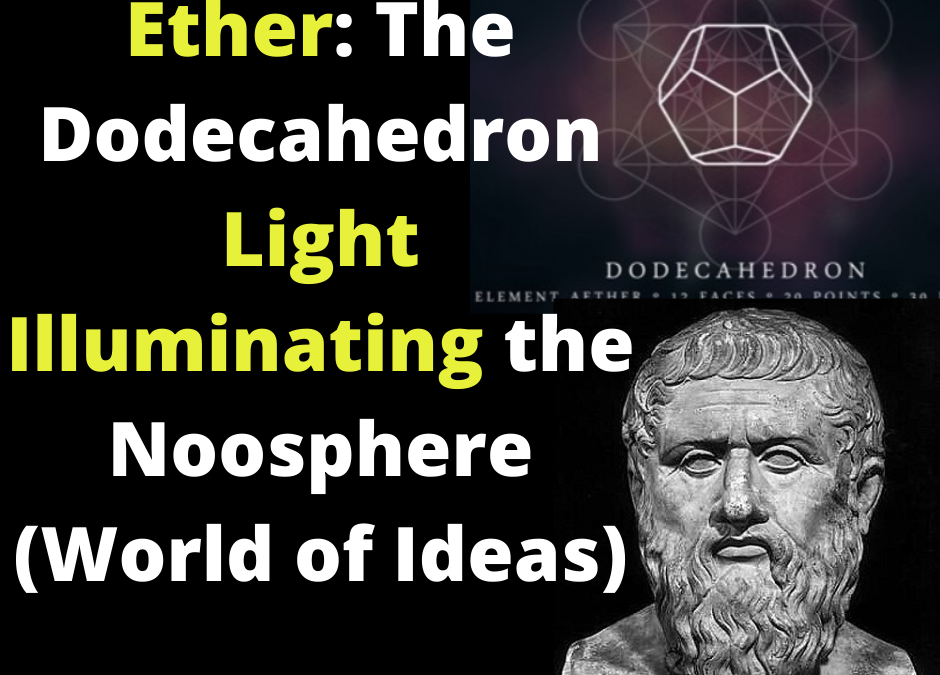
Ether: The Dodecahedron Light Illuminating the Noosphere (World of Ideas)
“Now, the time has come to bring brightness to man. I am Aether and I declare this to be done. As ordered by the personification of the upper air, Let There Be Light!” — Aether.
For thousands of years, a mysterious luminous substance known as “aether” (or “ether”) was one of the most researched and sought elements in the esoteric worlds of philosophy, alchemy, magic, and science. Many of the world’s greatest thinkers, such as Plato, Aristotle, Descartes, Newton, Einstein, and Tesla, have all written and or debated about its existence.
According to the Ancient Greeks, aether (Greek αἰθήρ, aithēr), also spelled ether, is the fifth element that fills the region of the universe above the terrestrial sphere and is distinct from the other four elements (Platonic Solids), Earth, Water, Air, and Fire.
Its Platonic solid is the dodecahedron.
Both Plato and Aristotle also referred to aether as “Idea” (Greek ίδέα), or ίερόν, (Greek hieron “a divine thing”) because it was thought to be heavenly, i.e. not of the material world (matter) and have the power of life.
Aether was first mentioned by Plato in the 4th century B.C.. He had written in Timaeus (58d) that Aether is that “which God used in the delineation of the universe.” He says “there is the most translucent kind which is called by the name of aether (αἰθήρ)” and is always being present in the air and with eternal motion in Cratylus (410b, 6 and § 5.1.3).
I construe “aether” in this way, that it is always running (aei thei), because it flows around the air (aera reon), so it would justly be called aeither. (Plato, Cratylus, 410b) Plato wrote;
“Sokrates (Socrates) : Let us inquire what thought men had in giving them [the gods] their names . . . The first men who gave names [to the gods] were no ordinary persons, but high thinkers and great talkers. But why should you not tell of another kind of gods, such as sun, moon, stars, earth, ether, air, fire, water, the seasons, and the year?
Sokrates; Air is called aêr because it raises (airei) things from the earth, or because it is always flowing (aei rhei), or because wind arises from its flow?
The word aethêr, I understand in this way: because it always runs and flows about the air (aei thei peri ton aera rheon), it may properly be called aeitheêra.” (Plato, Cratylus)
At the time and before Plato, the common belief was in just the four classical elements: Fire, Water, Earth, and Air. The discovery of aether as a material that was believed to fill the universe beyond the terrestrial sphere led to the proposal of aether as a name for the fifth element by Plato’s student, Aristotle.
Aristotle claimed that crystalline spheres were made of a fire like substance that was always moving, called aether. A substance that also filled the space between the celestial bodies.
According to Aristotle’s theories of motion, he believed that ether as a fire like substance that was always moving in a circular motion. But the other four elements tended to move in straight lines. The earth moved downward; fire moved upward, while water and air fell in between.
Aristotle wrote;
“We call the substance of the heaven and stars “aether,” not as some do, because it burns (aithesthai), being fire-like, although they are wrong about this ability, which is confused for fire’s, but because it is always moving (aei thein), being carried in a circular motion, being an element different than the four, unmixed and divine.” (Aristotle, On the Cosmos, 392a)
To help validate their theories, they claimed that this fire called aether filled the void in cosmic space and was the substance that made the celestial spheres move in a perfect circular motion.
Later, Proclus (412-487) in his commentary on Timaeus, connected the four elements with the Platonic four solids (earth-cube, air, the octahedron, water-icosahedron, fire-tetrahedron, and the pentagonal dodecahedron with the fifth element – ether to through which God formed the sky.
ETHER IN MYTHOLOGY
The Ancient Greeks personified their philosophies and scientific research into their mythologies. Aether is sometimes referred to as a God and also as a special or spiritual type of air in the highest portions of the atmosphere, only fit for the gods, and sometimes as the soul of the world.
In the Orphic hymns aether appears as the soul of the world, from which all life emanates. An idea which was also adopted by some of the early philosophers of Greece. In the Orphic Rhapsodies 66 (fragments), we read;
“This Khronos (Chronos, Unaging Time), of immortal resource, begot Aither (Aether, Light) [upper air] and great Khaos (Chaos, the Chasm) [lower air], vast this way and that, no limit below it, no base, no place to settle. Then great Khronos fashioned from (or in) divine Aither (Aether) a bright white egg [from which Phanes was born].”
In later times aether was regarded as an abode in the sky or Heaven, the residence of the gods, and Zeus as the Lord of the Aether, or Aether itself personified. (Pacuv. ap. Cic. de Nat. Deor. ii. 36, 40; Lucret. v. 499; Virg. Aen. xii. 140, Georg. ii. 325. Source: Dictionary of Greek and Roman Biography and Mythology)
According to Hesiod, aether was the primordial god who represented the light or brightness of the upper atmosphere (air) that the gods had breathed. He was the son of Erebus (Darkness) and Nyx (Night), and the brother of Hemera (Day/Ἀήρ).
“and in turn Aether and Day came forth from Night, whom she gave birth to after mingling in love with Erebus… (Hesiod, Theogony, 124-125)
The air of mortals was called Chaos or Aer, while the dead resided in Tartarus, enveloped in a misty darkness called Erebos. This divine substance, aether served as a protector of humans from Tartarus, the god of Hades (Hell/Underworld).
Derveni Theogony is the idea, from a fragment of Chrysippus (preserved in Philodemus, De Pietate (On Piety), that “everywhere is aither, which itself is both father and son”.
The Derveni papyrus (fourth century BC), refers to the Greek God Zeus ejaculating aether. Indicating that this aether can be found in our semen.
When Zeus had heard the prophecies from his father, he swallowed the revered one [or phallus], who [or which] sprang forth, first into the aether [or who first ejaculated aether].
In another passage from the De principiis, Damascius quotes other verses from the Rhapsodies:
“Then great Time fashioned from (or in) divine Aither a bright white egg.”
ETHER IN MODERN HISTORY
The 16th-century Swiss physician Paracelsus called aether “the substance of stars and souls.”
By the middle of the 17th century (1596-1650), René Descartes used ether to describe the medium of space that moves the world like a machine due to the motion of matter. According to Descartes, ether could explain the theory of gravity, while also explaining the propagation of light, acting as a medium of fluid comprising colliding particles that could transmit these mysterious forces.
One of Isaac Newton’s major theories was that aether played a major role in gravity and light in the Third Book of Opticks (1st ed. 1704; 2nd ed.) He defined it as the medium that “flows” continually downward toward the Earth’s surface and is partially absorbed and partially diffused as an elastic, invisible, strong, and subtle matter that existed everywhere in different forms.
Newton had written, “It is not a single uniform substance but just as the air contains aqueous vapours, so the aether may contain various aetherial spirits adapted to produce the phenomena of electricity, magnetism and gravitation.”
Newton further claimed;
“Doth not this aethereal medium in passing out of water, glass, crystal, and other compact and dense bodies in empty spaces, grow denser and denser by degrees, and by that means refract the rays of light not in a point, but by bending them gradually in curve lines? …
Is not this medium much rarer within the dense bodies of the Sun, stars, planets and comets, than in the empty celestial space between them? And in passing from them to great distances, doth it not grow denser and denser perpetually, and thereby cause the gravity of those great bodies towards one another, and of their parts towards the bodies; everybody endeavouring to go from the denser parts of the medium towards the rarer?” (Newton, 1718).
Christian Huygens’ wave theory of light published his famous Treatise on Light (Traité de la lumière), in which he claimed light traveled in the form of longitudinal waves via an “omnipresent, perfectly elastic medium having zero density, called aether”.
Johann II Bernoulli was recognized in 1736 with the prize of the French Academy when he proposed that all space was permeated by aether containing “excessively small whirlpools” of elasticity, transmitting vibrations from the corpuscular packets of light as they traveled through.
James Clerk Maxwell used aether to explain electric and magnetic phenomena, now called Maxwell’s equations, for the understanding that light is an electromagnetic wave.
Maxwell (1878) wrote:
“Aethers were invented for the planets to swim in, to constitute electric atmospheres and magnetic effluvia, to convey sensations from one part of our bodies to another, and so on, until all space had been filled three or four times over with aethers. The only aether which has survived is that which was invented by Huygens to explain the propagation of light.”
In an article, Man’s Greatest Achievement published by the New York Times, Nikola Tesla said that the luminiferous ether, life-giving Prana or creative force fills all space. Tesla had written;
“Long ago he recognized that all perceptible matter comes from a primary substance, of a tenuity beyond conception and filling all space – the Akasha or luminiferous ether – which is acted upon by the life-giving Prana or creative force, calling into existence, in never ending cycles, all things and phenomena.
The primary substance, thrown into infinitesimal whirls of prodigious velocity, becomes gross matter; the force subsiding, the motion ceases and matter disappears, reverting to the primary substance.
Can Man control this grandest, most awe-inspiring of all processes in nature? Can he harness her inexhaustible energies to perform all their functions at his bidding, more still – can he so refine his means of control as to put them in operation simply by the force of his will?
If he could do this, he would have powers almost unlimited and supernatural. At his command, with but a slight effort on his part, old worlds would disappear, and new ones of his planning would spring into being.
He could fix, solidify and preserve the ethereal shapes of his imagining, the fleeting visions of his dreams. He could express all the creations of his mind, on any scale, in forms concrete and imperishable.
He could alter the size of this planet, control its seasons, guide it along any path he might choose through the depths of the Universe.
He could make planets collide and produce his suns and stars, his heat and light. He could originate and develop life in all its infinite forms.
To create and annihilate material substance, cause it to aggregate in forms according to his desire, would be the supreme manifestation of the power of Man’s mind, his most complete triumph over the physical world, his crowning achievement which would place him beside his Creator and fulfill his ultimate destiny.
Only the existence of a field of force can account for the motions of the bodies as observed, and its assumption dispenses with space curvature.
All literature on this subject is futile and destined to oblivion.
So are all attempts to explain the workings of the universe without recognizing the existence of the ether and the indispensable function it plays in the phenomena.
My second discovery was of a physical truth of the greatest importance. As I have searched the entire scientific records in more than a half dozen languages for a long time without finding the least anticipation, I consider myself the original discoverer of this truth, which can be expressed by the statement;”
Tesla said, “There is no energy in matter other than that received from the environment.”
To Tesla, this luminous ether was an element that was part of our environment that permeated all air and space. It was the light and animating principle of all matter.
MODERN VIEWS ON ETHER
For more than two thousand years, ether was real and considered the 5th element to many of the world’s most esteemed luminaries. However, in modern physics, the theories of ether have mostly been abandoned. Aether is now considered Greek mythology.
It is defined as follows: “in physics, a theoretical, universal substance believed during the 19th century to act as the medium for transmission of electromagnetic waves (e.g., light and X rays) much as sound waves are transmitted by elastic media such as air. The Ether was assumed to be weightless, transparent, frictionless, undetectable chemically or physically, and literally permeating all matter and space.”
But there are still physicists today who believe in the existence of ether, like Robert B. Laughlin, Nobel Laureate in Physics, endowed chair in physics, Stanford University. Laughlin wrote;
“It turns out that such matter exists. About the time relativity was becoming accepted, studies of radioactivity began showing that the empty vacuum of space had spectroscopic structure similar to that of ordinary quantum solids and fluids.
Subsequent studies with large particle accelerators have now led us to understand that space is more like a piece of window glass than ideal Newtonian emptiness.
It is filled with “stuff” that is normally transparent but can be made visible by hitting it sufficiently hard to knock out a part. The modern concept of the vacuum of space, confirmed every day by experiments, is a relativistic Ether.”
I would like to quickly introduce you to what I believe to be the modern representation in the form of frozen phosphorus that makes the shape of a crystalized dodechaderon. This representation was created in 1905.
It reads, “At the freezing point [phosphorus] hardens, becomes brittle, and shows, on being broken, evidences of crystalline structure, the crystals being dodecahedral.” (V. I. Hallock I.C.S. 1905)
This really caught my attention because the Greeks had considered aether to be a type of fire, heavenly and the air of the Gods.
We know that the upper atmosphere at about 31 and 50 miles above Earth’s surface, gets progressively colder with altitude to the freezing point and well beyond, reaching an average temperature at the top of about minus 85 degrees Celsius (minus 120 degrees Fahrenheit).
I would assume that frozen phosphorus AKA aether in the upper atmosphere would create Plato’s dodechaderon. This makes sense because phosphorus has been found around comets, stars and planets such as Jupiter with its great red spot of phosphorus.
Here is a modern version of phosphorus clusters that also shows the dodechaderon.
As I explained in my previous essay, Plato’s Fire: How the world is made of phosphorus tetrahedrons, phosphorus interacts and combines with many of the elements. It is the only elements= that acts as Plato and Aristotle, described as the main active principle, or light within this unseen fabric that I theorize connects all things and forms via Plato’s World of Ideas or the Noosphere.
For example, when phosphorus reacts with oxygen, it forms phosphate. It is the main component of our DNA in the form of phosphates and our cells via phospholipids, and of the body’s key energy source, adenosine triphosphate (ATP).
You will find that phosphorus and phosphates react, interact and bind with all the other elements such as air (oxygen and nitrogen), water (H2O & Hydrogen) and carbon, creating more triangles that lead to forming new shapes or Platonic solids like the dodecahedron above and below found in our planet’s DNA of all living things.
And guess what we find when we look at the structure of many of the various phosphate groups that make up our semen and our very own DNA?
Yes, we find Plato’s luminous either and the various Platonic solids that represent it, the phosphorus tetrahedrons that when combined with the other elements in the human body such as air (oxygen and nitrogen), water (H2O & Hydrogen) and carbon to create more triangles.
Let me also bring your attention to when I mentioned of above in Geek Mythology about the Derveni papyrus (fourth century BC), which refers to the Greek God Zeus ejaculating aether. Meaning, this luminous substance of aether can be found in our semen.
In studying the physical properties and elements within semen, science has proven that it contains phosphorus in the form of phosphate esters, particularly glycerylphosphorylcholine (GPC), phosphorylcholine (PCh), and inorganic phosphate (Pi).
Researchers have proven that glycerylphosphorylcholine (GPC) is found in relatively high concentrations in the semen of many male animals, including man.
And guess what we find when we look at the structure of many of the various phosphate groups that make up our semen and our very own DNA?
Yes, we find Plato’s luminous either and the various Platonic solids that represent it, the phosphorus tetrahedrons that when combined with the other elements in the human body such as air (oxygen and nitrogen), water (H2O & Hydrogen) and carbon to create more triangles.
Triangles that interact with the other elements that then create the structure for the Greek aether, the dodecahederon.
To be continued…

Moe is the founder of GnosticWarrior.com. He is a father, husband, author, martial arts black belt, and an expert in Gnosticism, the occult, and esotericism.

